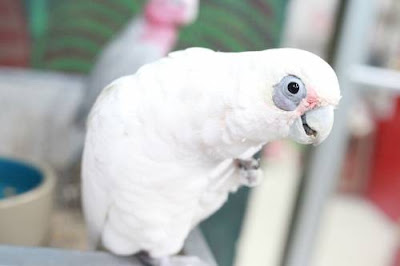Cockatoo Adoption
Cockatoo Adoption
Cockatoos can’t seem to shake the “velcro bird,” moniker. These birds have a tendency to want to be everywhere their people are. The cockatoo’s cuddly nature is definitely one of its biggest draws. The key to healthy, happy cockatoo relationship, however, is a balance of independent play and scheduled human interaction. After all, of all the species of companion parrot, cockatoos, would be most likely to find themselves on the therapist’s couch to deal with co-dependency issues, complaining, if they could, “I just want to be loved and appreciated.”
Cockatoos, can be quite vocal, which can make for a tricky situation for those who have close neighbors. Companion cockatoos come in two sizes: large cockatoos and small cockatoos. Large cockatoos are noticeably bigger, and include the umbrella, Moluccan, greater sulphur crest and triton. Smaller cockatoos include the bare eye, slender bill, Goffin’s, rose breast, lesser sulphur crest and citron.
Most people think of cockatoos as being all-white birds, yet they come in many colors. Moluccans are salmon colored, rose breasts are pink and gray, sulphur crests have yellow crest feathers as well as on the underside of their wings, and there are also black colored cockatoos (although they are rare as pets). These include the palm cockatoo and the gang-gang cockatoo.
If you are sensitive to dust and dander, a cockatoo might aggravate your sinuses, because they (along with cockatiels and African grey parrots) produce powder-down (fine dust particles composed of feathers that have broken down).




Comments
Post a Comment